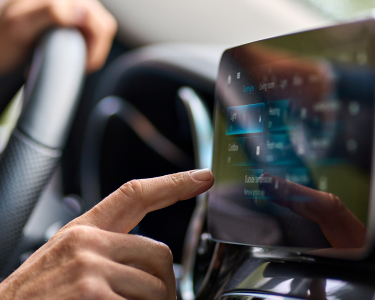Navigating the Era of Newer Digital Debt Collections Strategy

Delinquencies are on a rise, and banks and financial institutions across the globe are increasingly relying on newer tools and techniques to ramp up their debt collections and reduce recoveries, while reducing total cost to collect and reduce overall effort. This also creates a need to transform existing customer journeys keeping in customers’ preferences and requirements.
The new digital methodologies to collect debt are powered and supported by new-age technology, tools and platforms like artificial intelligence/machine learning (AI/ML) driven platforms, data-driven analytics decision engines, and blockchain. These newer technologies allow banks to act proactively, logically, and intelligently, which will further help in faster collection of past due debts without affecting customer experience (CX).
Harnessing Insights Driven by Artificial Intelligence and Machine Learning
AI/ML based analytical insights help in ingesting big-data and generate efficient and critical borrower information from multiple sources and channels, helping in forecasting value at risk accounts.
These data inputs primarily help in micro customer segmentation and customer profiling, income, and expenditure analysis, capability analysis, vulnerability analysis, credit history and financial history analysis, payment pattern and behavior analysis, all of which further helps in forecasting by overcoming challenges in a traditional collection approach.
With the use of AI/ML technology-based inputs, we can collate all relevant customer information and ensure correct profiling and segmentation. We can then use highly optimized digitized collection processes to achieve a higher collection. Tapping such crucial insights helps businesses gain a holistic view of the customer’s payment behavior pattern and their likelihood to make payments towards future debt. Mitigating the risk of non-payment is what is seen as a huge advantage when using such systems and technology.
Based on these intelligent inputs, the system can device and deliver a personalized debt collections/treatment strategy and the approach a collector can take at an individual customer/account level. An appropriate communication channel and technique is then suggested for right party contact on their preferred time, channel, and manner.
Predictive Analytics in Action for Optimizing Debt Collection
The power behind AI/ML technological inputs is that it helps in assessing and identifying customers who are a ‘non-payment’ risk, well in advance. This is done by going through certain patterns in the customer data, which prompts the business to plan the next course of action very much in advance. This also helps the business in preventing their accounts from going delinquent or under a debt cycle.
Based on this information, businesses can be proactive in handling and managing such cases with appropriate help and assistance to the customers and managing their debt, such as payment extensions, re-financing, other special repayment options, moratorium, etc. This prevents the accounts from moving towards bad debts or possible bad debt/write offs.
- Descriptive analytical inputs
- Predictive analytical inputs
- Prescriptive analytical inputs
The use of AI-based algorithms helps intelligently in identifying and segregating those customers who:
- Are willing and able to pay
- Are willing but unable to pay
- Are able but unwilling to pay
- Are neither willing nor able to pay
This segmentation and profiling of customers enables businesses to implement their collection efforts and strategies, and thus achieve higher outputs with reduced efforts and identify value at risk (VaR).
In a nutshell, efforts driven through digital debt collection not only helps to substantially reduce operating costs, but it helps in driving and delivering higher resolution rates. Several verticals like telcos, utilities and debt collection agencies are defining digital communications as their new normal.
Connecting on Every Front with Customers
Speech analytics and AI driven customer profiling and segmentation is most likely going towards effective digital customer engagement which will ensure and capture the entire debt collections life cycle.
Industry experts have stated that the use of digital collection techniques not only enables businesses to optimize their working style, but it also allows the debt collections associates to increase their collections by an average of 65%.
Unexpectedly, customers these days are more receptive and prefer digital communication channels that are not invasive, available as per their convenience, and are convenient for debt management. Omni-digi-channels are the preferred mode of communication for customers. This is because of the flexibility to self-service their debts besides the convenience to deal with it the way they want at their preferred time and place, without having to interact with any collection agent.
Banks and financial institutions these days have adopted and deployed AI-based platform solutions and bots to help assist customers achieve convenience in their debt journey. Customers also enjoy personalized and engaging experiences that are infused by technology. Improved CX impacts debt recovery.
Power of Analytics
Statistical analysis can accurately analyze true performance and outcome of debt portfolio. It also helps determine the most effective strategy for each customer account, covering each stage of the debt’s life cycle. A well-defined analytical model can:
- Predict value at risk (VaR)
- Predict value of collections for the day/week/month
- Determine skill-based account allocation
- Determine best or most appropriate collections strategy and workflow performance
- Predict next best action and propensity model
- Increase the overall ability to forecast risk early
Hence it is fair to conclude that debt collection is not only an art, but it is a science (when combined with AI/ML). It is imperative to plan and forecast each act while collecting debt, plan each interaction and execute those actions per customer preference. Debt Collections can be effectively managed through fair execution of proactive strategy, optimization of technology, quantitative measurement, and the use of analytical tools.

Gaurav has work experience spanning 18+ years in the ITES industry. He has successfully managed and handled RPA-driven transformation and automation of projects, business operations in credit and collections management (O2C), customer service/delivery, and business transition. As a Lead Business Consultant, liaisons with alliance partners and utilizes their products and solutions to build TechM capability across Verticals/Industries.








